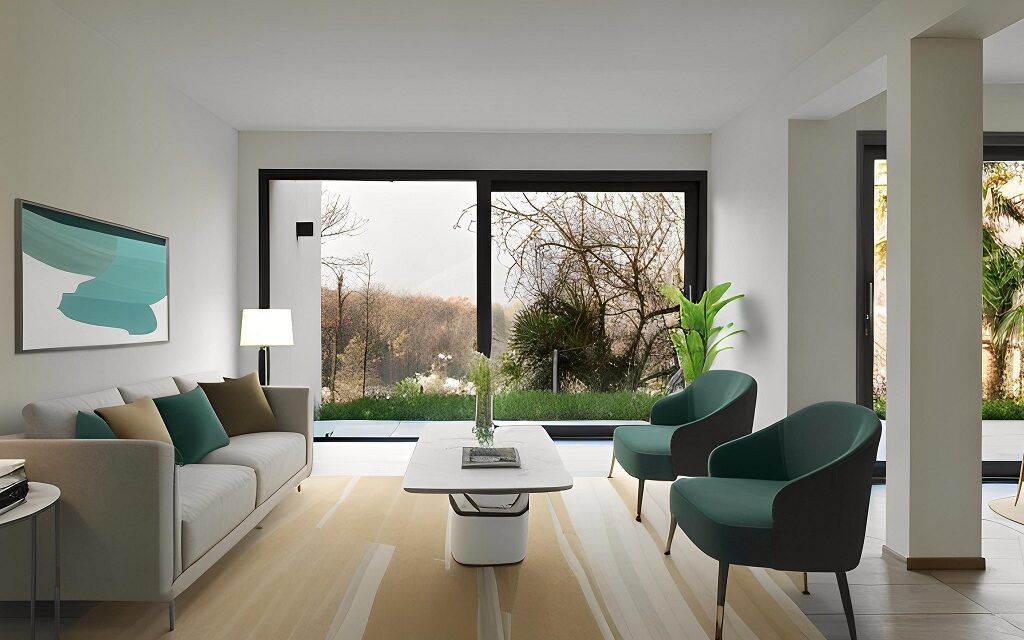Creative ways of showcasing a room, or an entire home, through professional-quality images without breaking your budget have been possible in recent years with innovative technologies such as Virtual Staging.
In our latest article pertaining to virtual staging, we explore how AI (Artificial Intelligence) is being used by a new entrant in the space, Virtual Staging AI, an offshoot of the Harvard Innovation Labs. We investigate the opportunities that their faster, lower-priced services may present to the residential real estate market, as well as various challenges.
Table of Contents
- The Current State of Virtual Staging
- An Interview with the CEO of Virtual Staging AI
- Opportunities & Challenges for Virtual Staging AI
- Notes on Using Virtual Staging AI for This Article
- Purgula’s Parting Thoughts on Virtual Staging AI
- How to Try Virtual Staging AI for Free
- Related Links
Also see:
- 7 Expert Tips on Using Virtual Staging to Sell Your Home Quickly
- The Many Benefits of Virtual Staging
- Virtual Staging Galleries & Catalogues
- Virtual Staging Resources
- More Recommended Virtual Design & Real Estate Reading
- Related Topics: Home Buying | Home Selling | Virtual Staging | Pre-Sale Renovations
The Current State of Virtual Staging
We have been intrigued with the endless possibilities that virtual staging software and services can offer, from assisting realtors in beautifying cluttered, outdated decor, to helping prospective homebuyers envision future home renovations before purchasing a property.
In Virtual Staging AI’s case, the startup’s CEO and Co-Founder, Michael Bonacina, was inspired by the possibilities of virtual staging when he was shopping for a rental apartment as a college student. The rental market represents yet another large and viable application area for virtual staging.
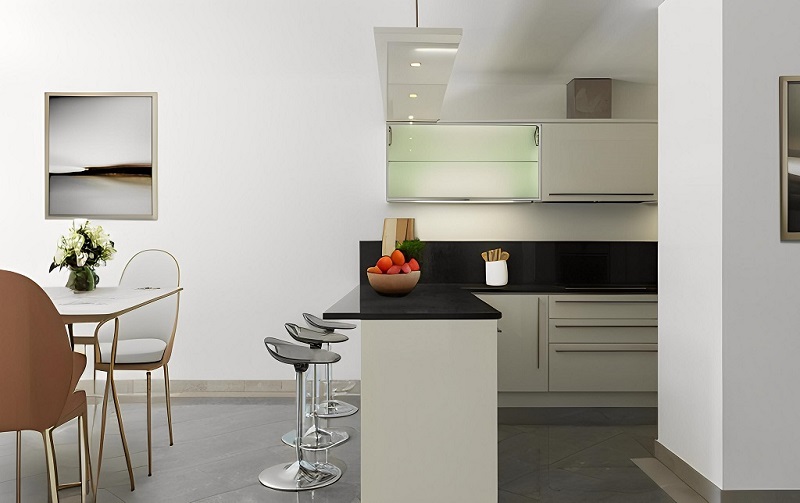
A virtually staged kitchen and dining area generated by Virtual Staging AI
Purgula has primarily focused on virtual staging as a highly-effective and convenient tool to sell residential real estate. We have also been anticipating several emerging product extensions, such as virtual home improvement projects integrated with data-powered shopping sources to visualize real products inside your to-be-renovated spaces. We expect to see 3D modeling companies like Openhaus push adoption rates and capabilities of virtual shopping for the home.
On the “selling real estate” front, the work of the best virtual staging vendors has typically been stunning. The biggest concern we have had is that the “industry” needs to adhere to labeling virtually staged photos consistently and responsibly. We do think that this has largely been the case.
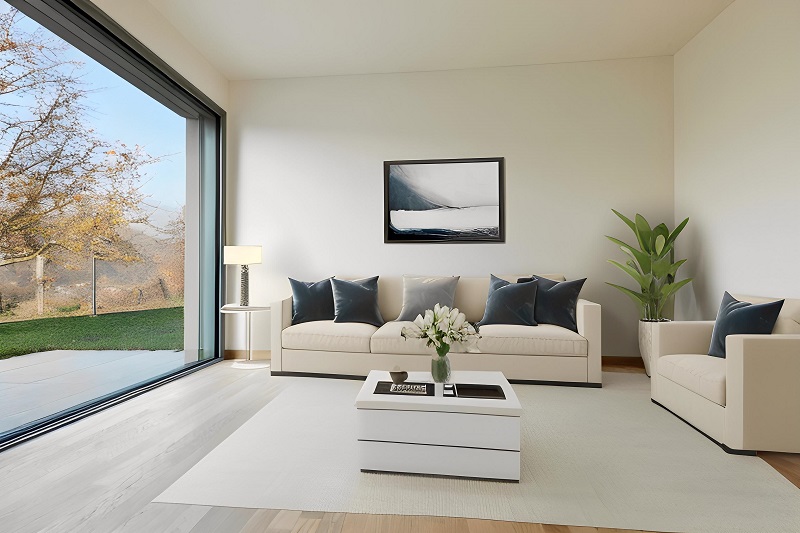
A virtually staged living room generated by Virtual Staging AI
However, as the technology and application methods evolve, real estate professionals need to keep “truth in advertising” front of mind, as increasing numbers of consumers get exposed to this new form of real estate promotion.
Although there are a number of high-quality virtual staging companies available to the real estate market, many of their services may require more effort by customers than expected. Some rooms, for example, may need to be prepped (e.g. decluttered) before taking photos, depending on the capabilities of the virtual staging vendor.
Once photos of the subject home or room are taken, a designer then typically sends a questionnaire to understand the customer’s preferences, and iterations of images are exchanged between the virtual staging company and the customer until the customer is satisfied with the result.
This level of interaction is all well and good when attempting to sell a multimillion-dollar property (especially a multimillion-dollar fixer-upper). However, what’s the average, busy property owner of a small multi-family or single-family home expected to do, when time and budgets are limited?
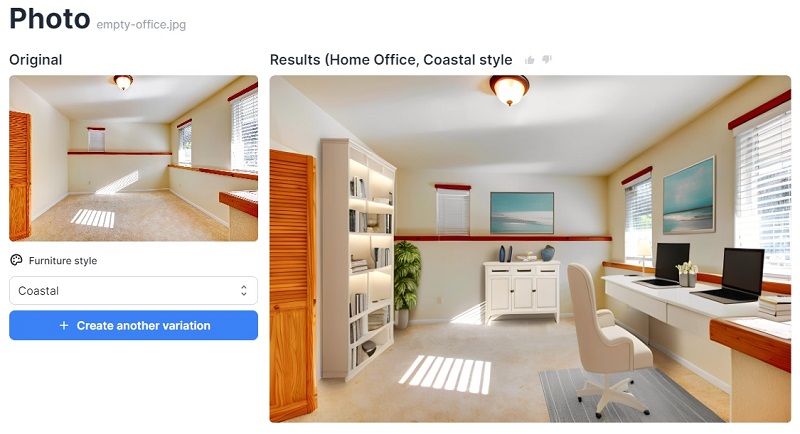
Screenshot of a virtually staged home office using Virtual Staging AI
An Interview with the CEO of Virtual Staging AI
When Bonacina first reached out to Purgula to let us know about his AI-powered virtual staging venture, naturally we were interested to learn more.
Here are a few questions that immediately came to mind that we shared with Bonacina to gain a better understanding of Virtual Staging AI’s plans and positioning in the market:
- What inspired you to launch your company?
- What makes Virtual Staging AI different from the competition?
- Can or will “non-design-specialists” to be able to modify AI-produced images easily and competently?
- Can or will product data feeds (including advanced 3D models) be integrated into your platform?
- Are you working on AI-mashups? (e.g. combining an inspirational photo with an existing room)
- Do you have plans for incorporating virtual renovations?
When thinking of AI-powered design tools, Purgula has primarily been interested in the following two traits:
- Quality of Images (realism, accuracy, and cohesive designs)
- DIY Modifications (the ability for a non-professional designer to make visual edits and improvements)
Here’s an overview of what we’ve learned about Virtual Staging AI and their view of their market.
Virtual Staging AI (VSAI) is attempting to change the paradigm of virtual staging apps with its sophisticated, proprietary algorithms that leverage artificial intelligence and computer vision technology to perform virtual staging. The company’s app quickly stages an image of an empty room with virtual furnishings with minimal interaction required by the user.
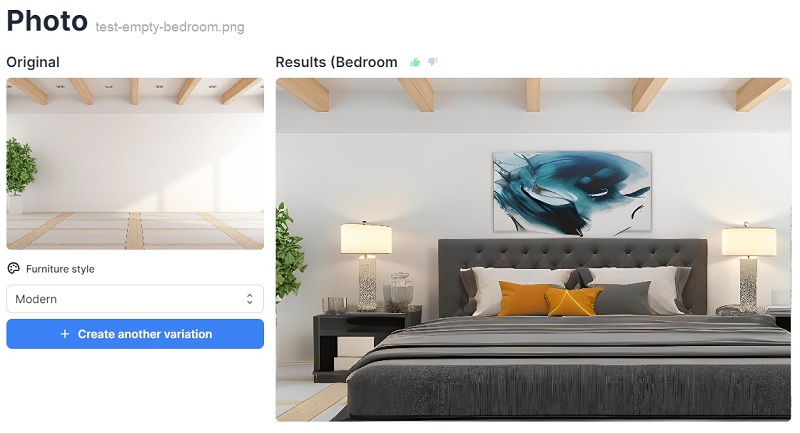
A virtually staged bedroom in modern style furniture generated by Virtual Staging AI
Rooms are first analyzed for size, depth and structure, as well as key features. Then furniture is added based on the room’s geometric analysis. With the aid of advanced machine learning, lighting, perspective and scale are applied to the room and integrated furniture to look remarkably realistic, aiming to be “virtually” indistinguishable from that of a real-world photo. This is all done within 30 seconds according to the firm’s website.
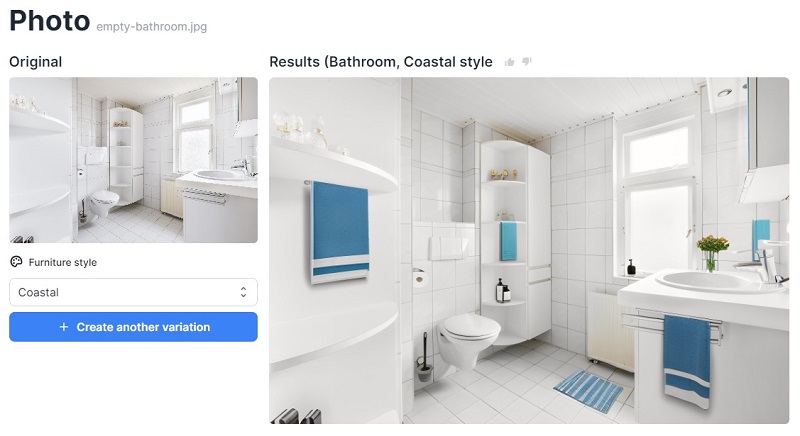
A plain bathroom enhanced by AI-powered virtual staging generated by Virtual Staging AI
To better understand Virtual Staging AI’s current capabilities, we’ve highlighted a few responses from Bonacina that shed light on Virtual Staging AI’s unique approach and plans for the future.
Purgula: What inspired you to launch your company?
Bonacina: We’re a team of CS (Computer Science) students, PhD candidates, and researchers in the field of AI image editing, and we were looking for a real world application of this technology. At the same time I was looking for an apartment and saw the big impact virtual staging had on me in my decision for an apartment. That’s how we got into this field.
Has Virtual Staging AI “Passed the Aesthetic Turning Test” yet?
Bonacina: An Aesthetic Turing Test is a really great analogy – right now we’re not 100% there yet in every single case. The metric we’re focusing on right now is how many seconds it might take somebody to discover AI artefacts in an image.
We published our first prototype three months ago and back then for some images the answer was zero seconds. Right now we’re consistently above a few seconds, I’d say, but we’re constantly working on improving the AI and hope to pass the Aesthetic Turing Test in the next three months.
For certain design inspirations our tool is definitely good enough, and more and more real estate agents and photographers are also adopting it to do virtual staging to show what the property could look like to potential buyers or tenants.
What ability do “non-design-specialists” have to modify AI-produced images easily and competently?
Bonacina: We don’t have an option to manually edit an image. Our target customers are real estate agents and FSBO (For Sale By Owner), where the goal is to get visually appealing furnishing for the broadest audience possible.
What users can do right now is create different variations of the furnished room. They are all automatically generated in seconds but contain different furniture or a different placement of the furniture and users can use the ones they like most.
Do you plan to incorporate furniture data feeds and other manufacturer items into your tool?
Bonacina: Incorporating furniture from stores into our images is something we have on our product roadmap, but we have many other things to do before we get there, such as: improving overall virtual staging results; launching virtual decluttering (removing furniture from a room with existing furniture); and including virtual renovations.
Are you working on AI-mashups?
Bonacina: AI-mashups are on our roadmap but we don’t know when it’ll be available.
Do you have plans for incorporating virtual renovations?
Bonacina: Yes! We’ll do that after decluttering, so probably later this year.
Here are additional details on VSAI’s current offerings.
Current Limitations
While virtual staging of all methods offers numerous benefits, it is essential to understand various limitations to set proper expectations. First, all virtual staging relies heavily on the quality of the original property photographs. To ensure optimal results, high-resolution images with proper lighting and angles are crucial.
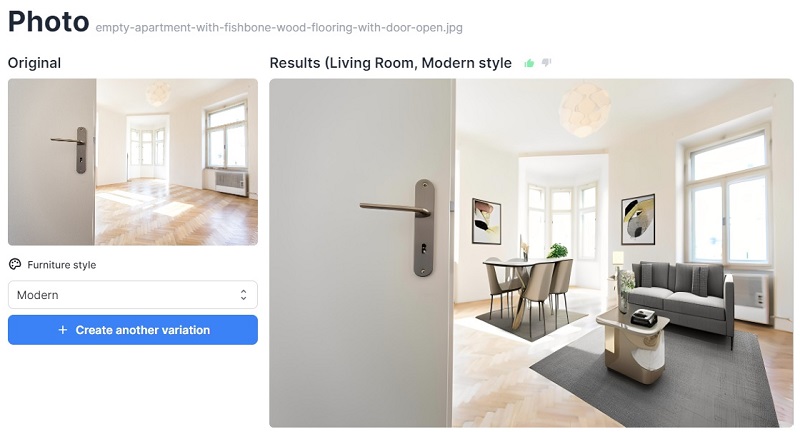
A virtually staged empty apartment with an open door that Virtual Stagning AI was able to decipher
In VSAI’s case, be sure to follow their recommendations for rooms that best suit their current algorithm for optimal results. Specifically, rooms and spaces with unique architectural features, prominent doors, unusual cladding, less-common types of windows , or that require significant upgrades or renovations may not be ideal for VSAI’s tool, at the moment.
White Label Solution
VSAI also offers a white label solution that can be licensed and used by other real estate professionals. White labeling is widely used by other virtual staging vendors and is a highly effective way to scale one’s technology. Through their API, it appears that it may be possible for other virtual staging firms to integrate VSAI’s AI solution into existing products and services. This would be an effective way for VSAI to scale and to allow existing virtual staging vendors to other the best of both worlds: high-touch interactive design services, plus fast, affordable on-demand DYI solutions.
Also see:
Opportunities & Challenges for Virtual Staging AI
After learning more about Virtual Staging AI and current AI capabilities for virtual staging, here’s how we perceive the opportunities and challenges facing a startup like Virtual Staging AI:
Opportunities
We believe that there will be a growing market of people whose key needs are low cost, speed and ease, be they homeowners or independent property owners.
Given VSAI’s focus on speed and low pricing, we strongly recommend that they continue to focus on the following customer segments that are conducive to convenient DIY solutions:
- FSBO (For Sale By Owner)
- FRBO (For Rent By Owner)
- Small Independent Property Owners
- Independent Real Estate Agents
- Independent Property Owners of Multi-family Rental Properties
- Low-Cost House Flippers
- White Labeling to Real Estate Professionals & Firms
We are additionally bullish regarding the concept of DIY virtual staging tools that address homeowner needs for home improvement projects, and home décor, especially when involving major shopping expenditures.
It cannot be stated strongly enough that homeowners need help visualizing all aspects of their homes with respect to a wide range of projects, not just limited to design. That said, we also see tremendous market potential for home services businesses that do not inherently have “design skills”, but could benefit from “visualizing” both proposed and completed work.
Examples of “non-design” service projects that could be aided by “virtually-staged visualizations” include:
- Plumbing
- Electrical Rewiring
- Outdoor Lighting
- Outdoor Irrigation
- Pest Control
- Security Systems
As we consider usage scenarios outside of prototypical applications for virtual staging (e.g. real estate), the definition of “virtual staging” broadens to that of “virtual rendering”. For example, the ability to contextually overlay labels and explanations of finished home improvement projects would be hugely valuable to homeowners, for both archival and educational purposes.
Again, the overarching benefit of all of these types of tools is to help customers visualize a given space or project, and increase their understanding of the underlying corresponding details.
For example, a comprehensive landscaping project could benefit from two types of virtual renderings:
- Aesthetic renderings that showcase flowers, plants, gravel, walkways and hardscape features
- System renderings that showcase overlaid diagrams of outdoor systems, such as: sprinklers, lighting, and security
Challenges
When thinking of AI and its application to design, we immediately think of a revised Turing Test, specifically that of an Aesthetic Turing Test.
An Aesthetic Turing Test can be defined as an intuitive test for a human observer to determine if they can tell if an image is “real or not”, or if it is “sufficiently realistic”.
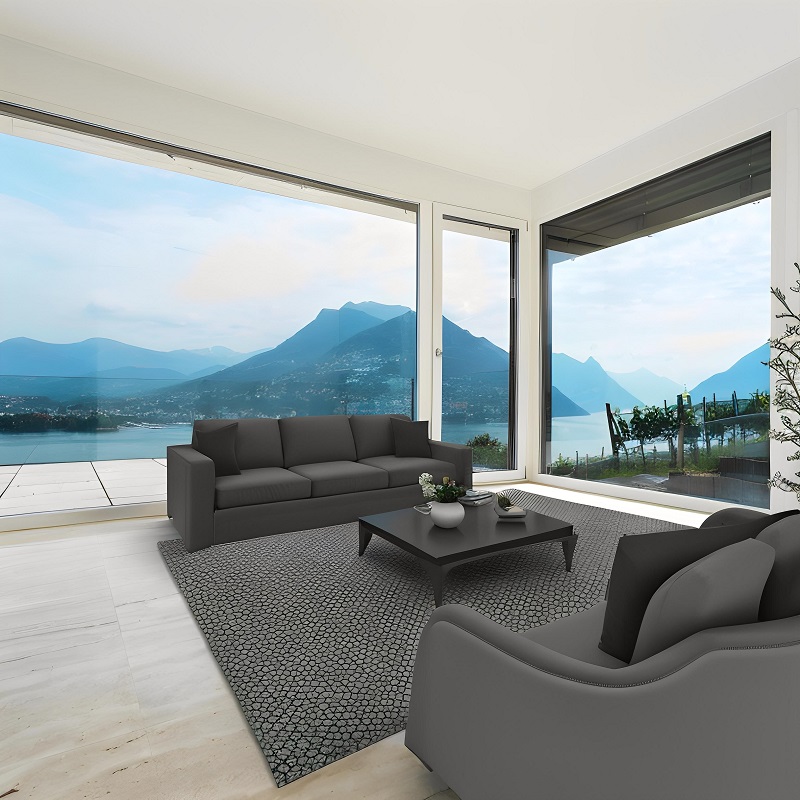
A luxury condominium with floor-to-ceiling windows virtually staged in modern furniture using Virtual Staging AI
For purposes of real estate and home improvement projects, Purgula’s version of “passing the Aesthetic Turing Test” would be that a rendering is “realistic enough” and “sufficiently accurate”. Said another way, the goal of an AI-powered image does not need to be “to fool the viewer”, but simply, “to represent a well-designed space accurately and realistically”.
Conversely, AI-powered images with obvious imperfections (e.g. not-to-scale dimensions; floating elements; grossly unrealistic objects; inaccurate perspectives; etc.) would fail the Aesthetic Turing Test and cause the end-customer to lose confidence in the vendor’s capabilities and “vision” of the given space.
On the “quality front”, vendors will need to meet a minimal standard of realism and accuracy to gain market adoption. To further enhance virtual renderings, vendors will eventually need to incorporate accurate data feeds of products and materials to take virtual staging to a new level of capability, consisting of:
- Quality
- Accuracy
- Convenience
One big challenge of incorporating “3D shopping data” (e.g. accurate data to render real products for the home, such as furniture and appliances) is achieving widely adopted industry standards (e.g. data definitions), and then enticing major manufacturers to share this data. In other words, though a tool may be capable of rendering products from industry standard models, digital libraries of popular products may still be proprietary for years to come.
The other challenge of AI-powered images would be providing intuitive ways for users to improve the learning of the given AI-engine and to modify “less-than-perfect” images. Easy-to-use methods of adjusting images will go a long way to increasing adoption by users, especially by “non-design-specialists”.
Another challenge for any company in a competitive and dynamic space like virtual staging is balancing ease-of-use, competitive functionality, and product loyalty. For VSAI, we strongly recommend that they continue to serve the rental market, especially in locations with a high percentage of college students. Young end users can serve as a vital source of continual product inspiration, including product extensions. Many college student renters will enter the real estate industry and may have built-in loyalty. In parallel, many renters will eventually become homeowners and may also have preferences to use AI-powered virtual staging.
Lastly, a critical dimension of customer satisfaction for VSAI to keep in mind is that their tool meet or surpass the expectations of their customer segments. On one hand, highly successful, in-demand real estate firms selling multimillion-dollar properties in prestigious neighborhoods have “off-the-chart high expectations”.
On the other hand, millions of property owners may be absolutely delighted to create self-serve digital images that are in competition with “empty rooms”. In other words, we recommend, during these early days, VSAI chooses to “compete” against properties that are empty or not virtually staged, and not against high-touch virtual design firms.
Notes on Using Virtual Staging AI for This Article
Upon our request to get familiar with VSAI’s tool, Purgula was granted a temporary account with full features. All of the virtually staged images contained in this article were created using VSAI. That said, here is informal feedback on our experience using this highly addictive, yet slightly frustrating tool (given its infancy):
- The rendering process time is definitely fast, with all images being completed in less than 30 seconds. The dynamic percentage progress icon made the process seem “relatively instant”.
- An absolutely imperative feature to launch ASAP is the ability to remove a rendered object (e.g. flat screen TVs; extra coffee tables; extra dining chairs; wall art; misplaced items; etc.). Often a rendered room would look perfectly fine if just one or two items could be removed. Currently, there is no way to instruct the AI engine to refine a rendering result.
- Related to the ability to remove items, it would be also helpful to exclude specific items (e.g. flat screen TVs; wall art) as part of one’s staging preferences, and set limits on the number of objects used in a rendering (e.g. maximum of one coffee table; maximum of six dining chairs; etc.)
- The preview image of a completed photo sometimes gives an inferior rendering (e.g. jagged lines) than the full high-res version.
- VSAI should enable more ways to gather feedback from users, as there could be several ways to “grade” a rendered image, such as:
- Color Palette
- Furniture Style
- Wall Prints
- Overall Composition
- Lighting Effects
- On the topic of feedback, we suspect that VSAI could “gamify” this process, as it is strangely satisfying to identify what is “likeable” about an image, and elements that are “less-than-perfect”. For example, it would be convenient to be able to click on an element to re-render, such as a wall print, while leaving everything else as-is.
- Given that there are many furniture styles from which to choose to stage a given photo, it would be helpful for VSAI to have a representative furniture gallery to get familiar with “best fit” styles upfront before using the tool
- Regarding furniture styles, the ability to change furniture styles for a given uploaded image is quite convenient and an important part of the creative process (e.g. certain styles tend to render better for specific types of photos)
- Also regarding furniture styles, we recommend that VSAI reduce the number of styles (e.g. to about 4 or 5), so that they can focus on the reliability of the most popular styles (e.g. Modern, Luxury, Farmhouse, Scandinavian, Coastal) before adding more styles
- VSAI also needs to incorporate standard UI features (perhaps using Canva as inspiration, given their large user base) to organize and name photos and collections of photos (e.g. rename; delete; duplicate; copy; etc.)
- Having a “Save to Favorites” function would also be convenient, which would be the ability to save a rendered composition (e.g. furniture, colors, etc.) to “re-use” again
- The tool needs to better handle open spaces to facilitate multi-functional rooms (e.g. dining area opening up to a living room)
It would be extremely helpful to be able to highlight a subsection of a photo to stage virtually, or conversely, highlight a subsection to ignore
Purgula’s Parting Thoughts on Virtual Staging AI
Being inundated daily with countless new articles on the promises of AI, we were refreshed by the honest and credible candor shared with us by Bonacina. His openness may be due to “youth”, but it’s a beneficial trait to possess in business, as it will help build lasting credibility.
Having spent considerable time with their tool, there are many basic enhancements we expect VSAI to make in the near future that will dramatically enhance the usability and effectiveness of their tool. The speed of the tool will certainly buy them time to make these necessary improvements.
In Bonacina’s case, we hope that he stays inspired by the delight he experienced when seeing virtual staging “in the wild” while seeking a rental property. By focusing on the right customer segments and partnerships, his firm will have ample time to grow their business, while optimizing and scaling the capabilities of AI-powered virtual rendering services. We are especially intrigued about how interface designers, human programmers, and end-users can facilitate faster and more efficient learning by the underlying AI engine.
Though VSAI’s future certainly looks promising in the real estate industry, we think the firm may be pleasantly surprised by how their technology will be applied and adopted elsewhere.
How to Try Virtual Staging AI for Free
Virtual Staging AI can be explored risk-free, without needing to pay or sign up.
To sample Virtual Staging AI for free, simply have one or more photos (preferably without unusual features or angles) ready to upload to their website at:
The resultant images created by the free version will have a watermarked logo. If you like the results, you can choose a paid plan starting from $15 per month. Pricing is correlated to the number of photographic uploads. However, each uploaded photo is permitted unlimited revisions, no matter the plan, which is a vital part of the creative process.
If you need advanced support or API access to the software, look into their enterprise plan.
Related Links
More Recommended Virtual Design & Real Estate Reading
- A “Before” vs “Virtual” vs “Real Life” Renovation Case Study
- Why Virtual Tours Are Critical to Both Homebuyers & Homesellers
- 10 Virtual Home Services Every Homeowner Should Know
- 5 Examples of Older Homes Returning Maximum Profit with Renovations
- Need Renovation Inspiration? Try These Innovative Design Resources!
- 4 Ways to Maximize Your Home’s Value
- 10 Traits of Innovative Homeowners
| Purgula is reader-supported. When you click on links to other sites from our website, we may earn affiliate commissions, at no cost to you. If you find our content to be helpful, this is an easy way for you to support our mission. Thanks! Learn more. |

